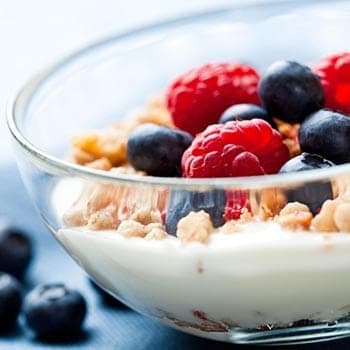Research published in Diabetologia (the journal of the European Association for the Study of Diabetes) suggests that two large meals (breakfast and lunch), rather than six small meals with the same total calories, are better for controlling weight and blood sugar in people with type 2 diabetes. The research is by Dr Hana Kahleová, Diabetes Centre, Institute for Clinical and Experimental Medicine, Prague, Czech Republic, and colleagues.
The study assessed 54 patients (29 men, 25 women) treated with oral diabetes drugs, aged 30–70 years, BMI 27–50 kg/m2 and HbA1c of 6–11.8% (42–105 mmol/mol). They were asked to follow one of two regimens of a restricted calorie diet, each containing 500 calories less than the recommended daily amount; in one programme the meals were six small meals (A6) and the other 2 large meals, breakfast and lunch (B2). In this cross-over trial, the 54 participants were divided into 2 groups of 27, with each group doing one of the two programmes for 12 weeks, and then after finishing moving on to the other programme, again for 12 weeks. The diet in both regimens had the same macronutrient and calorie content. Liver fat content, insulin sensitivity and pancreatic beta cell function (the cells that produce insulin) were measured using a variety of techniques and mathematical modelling.
The researchers found that body weight decreased in both regimens, more for B2 (-3.7kg) than for A6 (-2.3kg). Liver fat content decreased in response to both regimens, more for B2 (-0.04%) than for A6 (-0.03%). Fasting plasma glucose and C-peptide* levels decreased in both regimens, again more for B2. Fasting plasma glucagon (the hormone that converts glycogen back to glucose) decreased with the B2 regimen, whereas it increased for the A6 regimen. Oral glucose insulin sensitivity (OGIS) increased in both regimens, more for B2. No adverse events were observed for either regimen.
The authors say: “Eating only breakfast and lunch reduced body weight, liver fat content, fasting plasma glucose, C-peptide and glucagon, and increased OGIS, more than the same caloric restriction split into six meals. These results suggest that, for type 2 diabetic patients on a calorie-restricted diet, eating larger breakfasts and lunches may be more beneficial than six smaller meals during the day.”
They add: “Novel therapeutic strategies should incorporate not only the energy and macronutrient content but also the frequency and timing of food. Further larger scale, long-term studies are essential before offering recommendations in terms of meal frequency.”
If our reporting has informed or inspired you, please consider making a donation. Every contribution, no matter the size, empowers us to continue delivering accurate, engaging, and trustworthy science and medical news. Independent journalism requires time, effort, and resources—your support ensures we can keep uncovering the stories that matter most to you.
Join us in making knowledge accessible and impactful. Thank you for standing with us!

